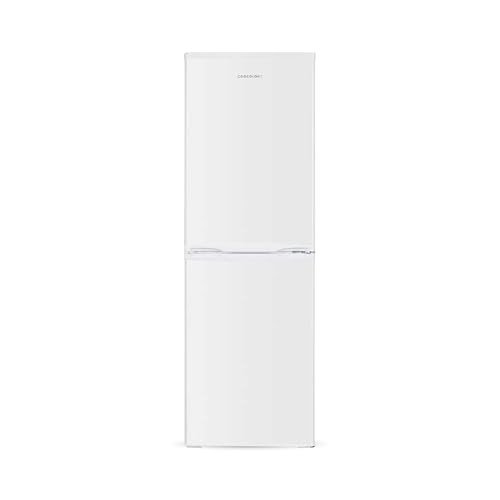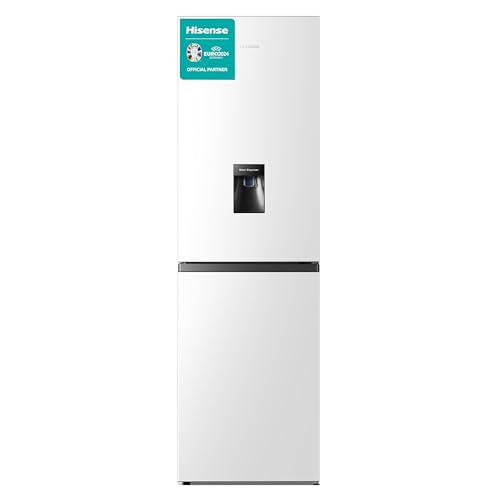7 Effective Tips To Make The Most Out Of Your Fridges And Freezers
페이지 정보
작성자 Trena 작성일 25-09-29 02:29 조회 9 댓글 0본문
Understanding Fridges and Freezers: The Essential Kitchen Appliances
Fridges and freezers are 2 of the most necessary appliances in modern kitchens. These appliances serve an important function in food preservation and waste decrease by making sure that disposable items remain fresh and safe for intake. This article looks into the numerous types of fridges and freezers, their performances, and important factors to consider for selection and upkeep.

Kinds of Refrigerators
The market provides a range of refrigerator types, each developed to meet various consumer needs. Below is a list of the most common kinds of fridges:
Top-Freezer Refrigerators
- Most typical type.
- Freezer compartment is located above the refrigerator section.
- Typically more budget-friendly and energy-efficient.
Bottom-Freezer Refrigerators

- Freezer lies at the bottom.
- Permits much easier access to fresh products at eye level.
- Often features pull-out drawers for much better company.
Side-by-Side Refrigerators
- Refrigerator and freezer sections are nearby.
- Suitable for narrow kitchen areas and allows simple access to both compartments.
- Typically comes with water and ice dispensers.
French Door Refrigerators
- Combines a bottom freezer with double doors at the top.
- Deals sufficient storage and stylish designs.
- Often consists of functions like temperature-controlled drawers.
Compact Refrigerators
- Smaller size suitable for restricted areas.
- Typically utilized in dormitory, little apartments, or as secondary fridges.
Table 1: Comparison of Refrigerator Types
| Type | Benefits | Drawbacks | Common Size |
|---|---|---|---|
| Top-Freezer | Budget-friendly, energy-efficient | Less practical access to the freezer | 14-30 cu. ft. |
| Bottom-Freezer | Simpler access to fresh food | Freezer can be more difficult to organize | 19-30 cu. ft. |
| Side-by-Side | Easy access, water/ice dispenser | Narrow vs. storage space | 22-30 cu. ft. |
| French Door | Trendy, spacious, arranged | More costly | 20-30+ cu. ft. |
| Compact | Space-saving, portable | Minimal storage | 1.7-5.5 cu. ft. |
Types of Freezers
Freezers are an equally crucial home appliance for food conservation. They come in different designs designed to fit various household requirements. Consider the list below types:
Upright Freezers
- Run like a basic refrigerator with vertical storage.
- Simpler to organize with shelves and compartments.
Chest Freezers
- Big, horizontal style normally using more storage space.
- Maintains temperature levels better throughout power failures.
- More energy-efficient than upright models.
Portable Freezers
- Compact units perfect for outside activities or small spaces.
- Frequently used for camping journeys or as short-lived storage.
Table 2: Comparison of Freezer Types
| Type | Benefits | Disadvantages | Common Size |
|---|---|---|---|
| Upright Freezer | Much easier to arrange | Less energy-efficient, more flooring space | 5-20 cu. ft. |
| Chest Freezer | Holds more products, energy-efficient | Harder to arrange | 5-25 cu. ft. |
| Portable Freezer | Compact and versatile | Minimal storage capability | 1-10 cu. ft. |
Key Features to Consider
When selecting a fridge or freezer, customers ought to remember a number of features that can enhance functionality:
- Energy Efficiency: Look for models with the ENERGY STAR certification to save money on electricity bills.
- Storage Capacity: Evaluate storage needs based on family size and eating habits.
- Temperature level Control: Some home appliances provide digital controls for precise temperature level settings.
- Adjustable Shelving: Customizable shelving enables optimal organization.
- Water and Ice Dispenser: Offers convenience however can use up important space inside.
- Noise Level: Sound rankings can influence comfort, specifically in open-concept homes.
Benefits and drawbacks of Having a Fridge and Freezer
While fridges and freezers are important innovations, they also have certain advantages and drawbacks:
| Pros | Cons |
|---|---|
| Preserve food life expectancy and decrease waste | Need regular upkeep |
| Allow bulk purchasing and meal prepping | Can be costly to purchase and run |
| Offer convenience and fast access to food | Occupy significant cooking area space |
Upkeep Tips
To guarantee longevity and ideal performance of fridges and freezers, think about the following upkeep pointers:
- Regular Cleaning: Clean the exterior and interior regularly to avoid buildup of dirt and germs.
- Inspect Seals: Inspect door seals frequently for leaks to maintain efficiency.
- Temperature Settings: Keep the fridge at 34-38 ° F and the freezer at 0 ° F for ideal food preservation.
- Thaw as Needed: Chest freezers should be thawed regularly to preserve performance.
- Clear Air Vents: Ensure that airflow isn't obstructed to improve energy effectiveness.
FAQs About Fridges and Freezers
Q1: How long can food be kept in a freezer?A: Most foods can be kept in a freezer for a number of months. Meats and poultry typically last 4-12 months, while vegetables can last as much as 8-12 months.
Q2: How often need to I clean my fridge and freezer - www.georgebaggott.link,?A: It is suggested to clean your fridge and freezer every 3 to 6 months, or as needed when spills take place. Q3: Can I put hot food directly in the fridge?A: It is advised to cool hot food to space temperature level before placing it in the fridge to avoid
raising the temperature inside the device. Q4: Why is my fridge running constantly?A: This could be due to a malfunctioning thermostat, stopped up coils, or door seals that aren't working correctly. Fridges and freezers are important
possessions to contemporary households, supplying vital services for food storage and preservation.
Understanding the different types, functions, and upkeep requirements can help consumers pick the right devices for their requirements and optimize their performance. Welcoming energy-efficient models not only supports sustainable practices but also adds to substantial cost savings on utility expenses, making notified options more crucial than ever.
- 이전글 You'll Never Be Able To Figure Out This Lean-To Conservatory Builders's Secrets
- 다음글 천안노래도우미알바 ★O1O=9450=1669★ 천안노래도우미알바 천안노래방알바 천안1등사무실
댓글목록 0
등록된 댓글이 없습니다.

